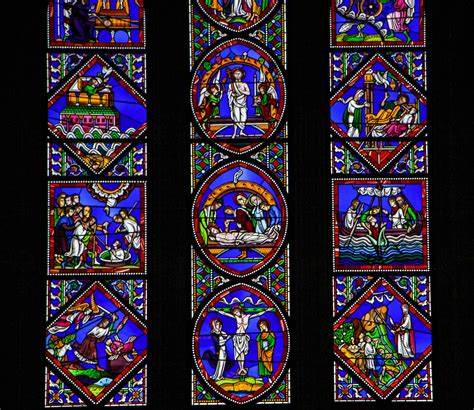
Simon de Brion, the future Pope Martin IV, was born between 1210 and 1220, in the Ile de France, an area around Paris. He lived until 28 March 1285. Simon studied at the University of Paris then went on to study law in Padua and Bologna.
In 1238, Simon joined the canonry at ST. Quentin. He stayed there for years. Between 1248 and 1259, Simon was canon at the cathedral of Rouen, then he became the archdeacon. At the same time, King Louis IX (St. Louis) nominated him the treasurer of St. Martin Church in Tours.
In 1255, King Louis founded the Poor Clares’ convent at Longchamps. Simon was the Guardian of the convent.
But Simon was designed for greater things. In 1259, the King appointed Simon the Keeper of the Great Seal, or, the chancellor of France. A year later, he became the chancellor of all France under King Louis.
At the end of 1261, Pope Urban IV appointed Chancellor de Brion as cardinal-priest of the Church of St. Cecilia in Rome. With this appointment, Simon should have moved to Rome, but Urban needed a papal legate experienced with the French court. Certainly, the Chancellor was! So, he served as papal legate to France for both Pope Urban and Pope Clement IV between 1264 and 1268.
Pope Clement called Simon back to Viterbo to serve. Apparently, the two were close enough that a letter exists from Clement to de Brion wishing the legate well when he fell from a horse and hurt his leg.
Concerns of war rose in the summer of 1268. Simon was seen as prudent, faithful, focused on business and with common sense. So, in April he went to Germany to negotiate. Conradin, the assumed emperor, and Ludwig, Duke of Bavaria, were stopped at Verona while trying to get to Pavia. Then, Clement IV died in late November of the same year. The cardinals set up a conclave at the Cathedral of San Lorenzo in Viterbo. It was an excruciating, almost three year-long situation where several cardinals left for their health and food and sleeping accommodations were seriously sub-par.
De Brion was one of the signatories of a letter to the captain of the city of Viterbo demanding he cease and desist from harassing the cardinals and the agreement to let a committee of six cardinals choose a new pope. They chose Teobaldo Visconti, archbishop of Jerusalem, the new Gregory X. He wasn’t even at the conclave!
De Brion remained with the popes until the summer of 1274 when Pope Gregory X reappointed him a legate. He served in that role for five years. Politics had gotten complicated again. Manfred, the natural son of deceased Frederick II, was a candidate for the Holy Roman Emperor. The pope did not support his candidacy; DeBrion was asked to raise money for a crusade against Manfred. DeBrion, as legate, was involved in negotiations to make King Louis’ brother, Charles d’Anjou, the new king of Sicily. Due to this negotiating, De Brion was not at the conclave in January 1276, the one in July 1276, the one in September 1276 nor the May-November 1277 conclave that elected Nicholas III.
Nicholas asked Simon to reconcile the new king of France, Philip, with Alonso, King of Leon and Castile, as well as rearranging other alliances. The pope, obviously anti-French, added ten cardinals, including family and friends, trying to build up an unapproachable Italian majority. Nicholas died in August 1280, just in time to make sure the French could not win. But his attempt did not work.
The conclave, set up at Viterbo, did not succeed at getting 2/3 of the votes. So the town mob broke into the conclave and kidnapped the brother and nephew of the deceased pope, cardinals who agreed with their anti-French relative. The remaining cardinals unanimously elected De Brion on 22 February 1281.
The Papacy
The Roman Senate refused a coronation for a French pope. Viterbo was under interdict for the riots and awful conclave. So they moved the coronation to Orvieto on March 23. Martin and the curia stayed at Orvieto.
Martin needed to handle the Byzantine Empire and the East-West Schism. Emperor Michael had converted to Roman Catholicism in an attempt to influence Charles d’Anjou to restore the Latin Empire in the East. Then Martin excommunicated Michael. This broke the attempted reunion agreement of 1279.
In 1282, Charles lost Sicily during a massacre. Sicilians had elected Peter III of Aragon as their king and asked Martin for a papal confirmation. Martin did everything to keep Charles in place. He excommunicated Peter, declared Aragon forfeit and began a crusade against Peter.
Martin and the curia left Orvieto in June 1284 and headed to Perugia. Martin died of a sudden illness in March of 1285. His appointment of four more French cardinals gave the French some clout for a while, but not for long.

Recent Comments